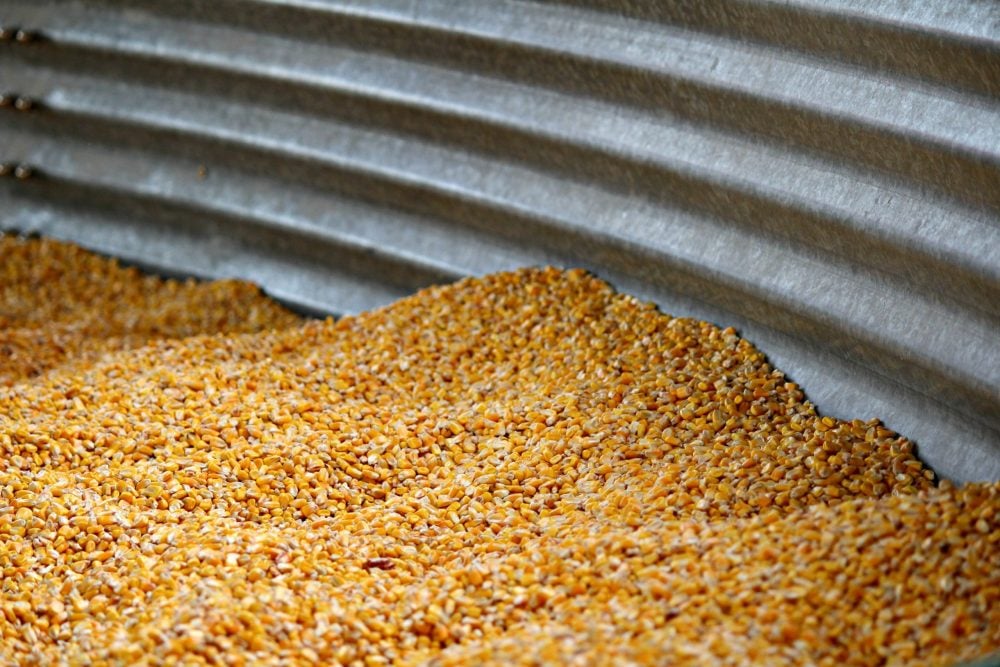The price tag to shut down the Canadian Wheat Board’s wheat and barley marketing monopoly is to include almost $30 million in federal incentives and supports for the northern grain port of Churchill, Man.
Agriculture Minister Gerry Ritz and Winnipeg MP Joyce Bateman on Tuesday pledged up to $5 million per year for five years as an “economic incentive” to support the shipping of grains, oilseeds, pulses and other crops through the Hudson Bay port.
That funding, to flow through Agriculture and Agri-Food Canada, is to begin once the government’s Marketing Freedom for Grain Farmers Act, tabled Tuesday in the House of Commons, passes and becomes law.
Read Also

Feed Grain Weekly: Demand, activity slowly rising
While demand and activity is slowly ramping up for the fall cattle run, feed grain prices are currently in decline, said a Lethbridge, Alta.-based trader.
The government on Tuesday said it “acknowledges that there will be a period of adjustment for the port when the Act is passed; however, the Port of Churchill will remain an important option through which farmers ship their grain to market.”
Ritz and Bateman also pledged an additional $4.1 million in Transport Canada funding over three years toward maintenance of the port.
The government on Tuesday also committed its economic development agency, Western Economic Diversification Canada, to work with the not-for-profit Churchill Gateway Development Corp. on $8 million in previously-announced port infrastructure improvements, extending the completion date for that work by two years, to 2015.
More generally, the government pledged to “explore options for the future of Churchill and the Port of Churchill.”
“Cornerstone”
Churchill’s port facilities have been operated since 1997 by Denver-based OmniTrax, which also owns the former Canadian National (CN) rail line from The Pas, Man. to Churchill, now dubbed the Hudson Bay Railway.
The northern port, which suffers from a narrow July-to-November shipping window due to ice on Hudson Bay, loads an average of 13 to 20 grain vessels and four or five other vessels per year, the government said.
CWB shipments have normally accounted for over 90 per cent of Churchill cargo, but that figure accounts for only about two per cent of Prairie grain shipments in any given year, the government said Tuesday.
The port’s catchment area for grain generally runs from Prince Albert in northern Saskatchewan east through Humboldt and Canora and into northwestern agricultural Manitoba, north from Swan River and Bowsman up to The Pas.
While grain and other rail traffic face an 1,100-km trip over heaving northern Manitoba terrain to reach the community, Churchill is nonetheless considered the most efficient export route for grain from its catchment area, allowing farmers to save on rail freight costs and avoid St. Lawrence Seaway charges.
The CWB in recent years offered a Churchill Storage Program which paid farmers in those regions to store grain on-farm for northbound delivery at a later date.
The board in 2010 reported shipping its highest volume of wheat through the port in over 30 years, loading 20 ocean vessels of wheat and durum bound for Europe, Africa and the Americas.
The port in recent years has also handled extra inbound traffic as a Prairie growers’ bulk buying group used Churchill to bring in Russian-made fertilizer. Those shipments were the first under an “Arctic Bridge” concept proposed to link Russian and Canadian Prairie markets through Churchill.
The government stressed Tuesday that it “has made Canada’s North a cornerstone of its agenda” and “will continue to exercise leadership in the stewardship of northern lands and waters.”
Related story:
Tories’ bill maps out endgame for CWB’s single desk, Oct. 18, 2011















